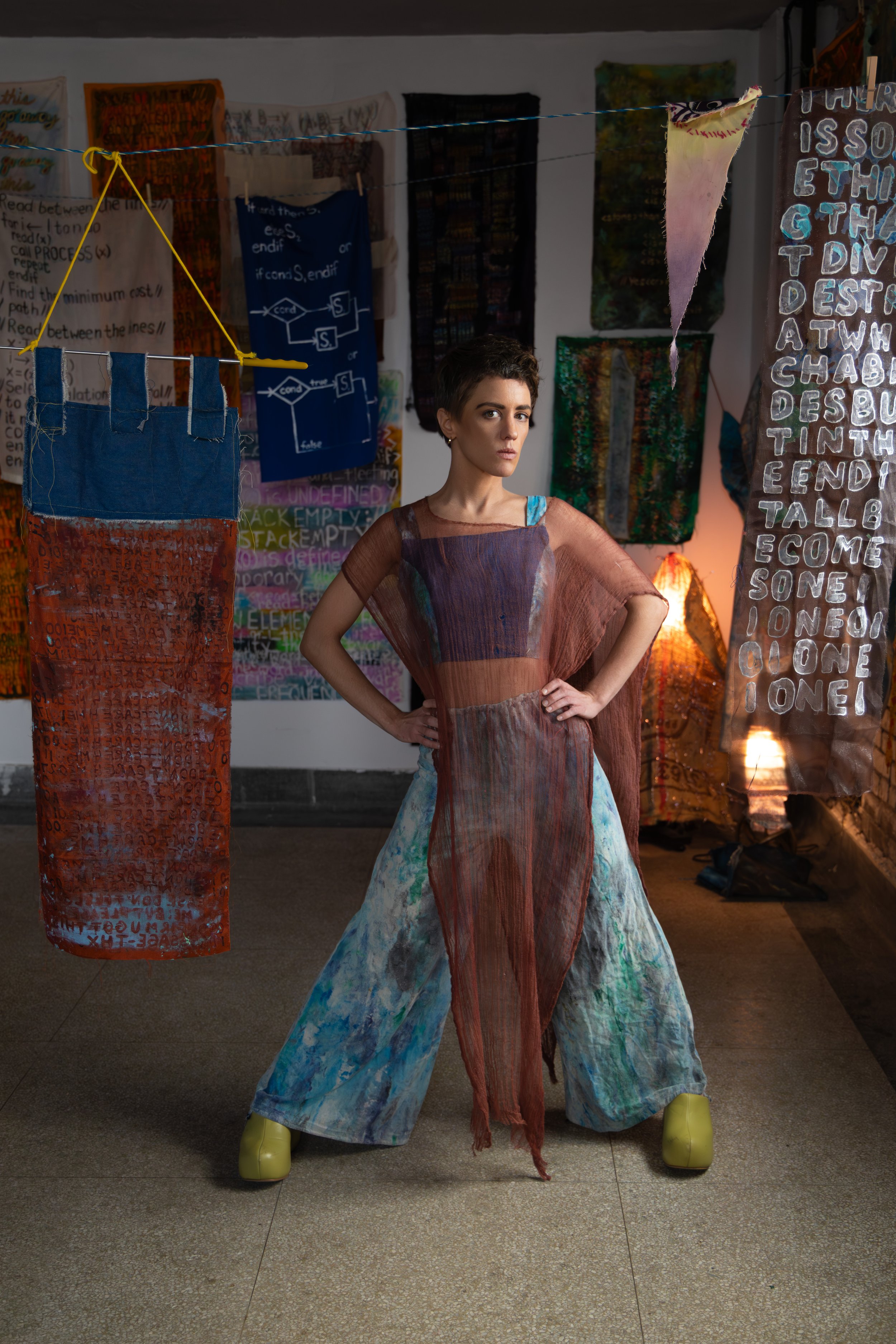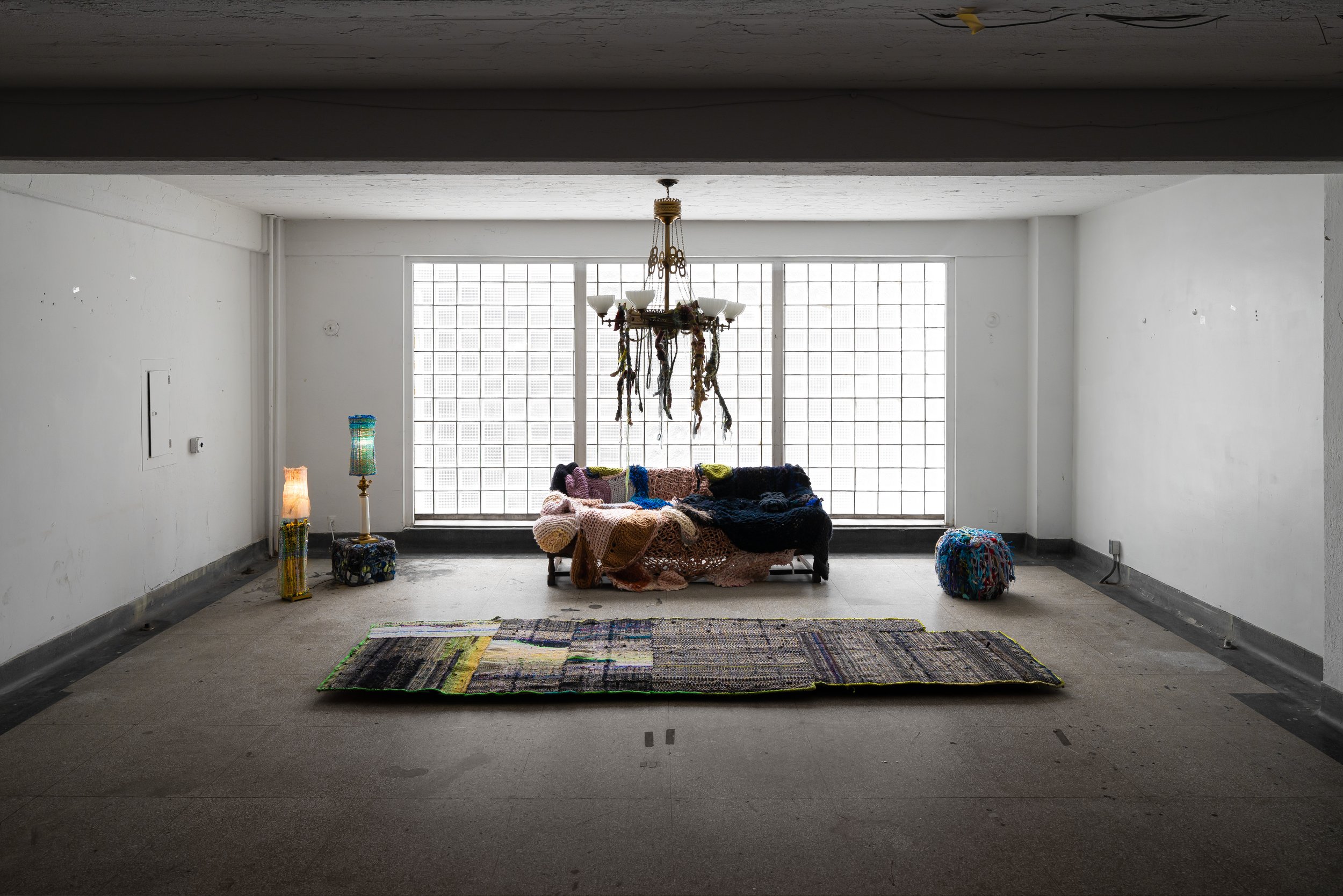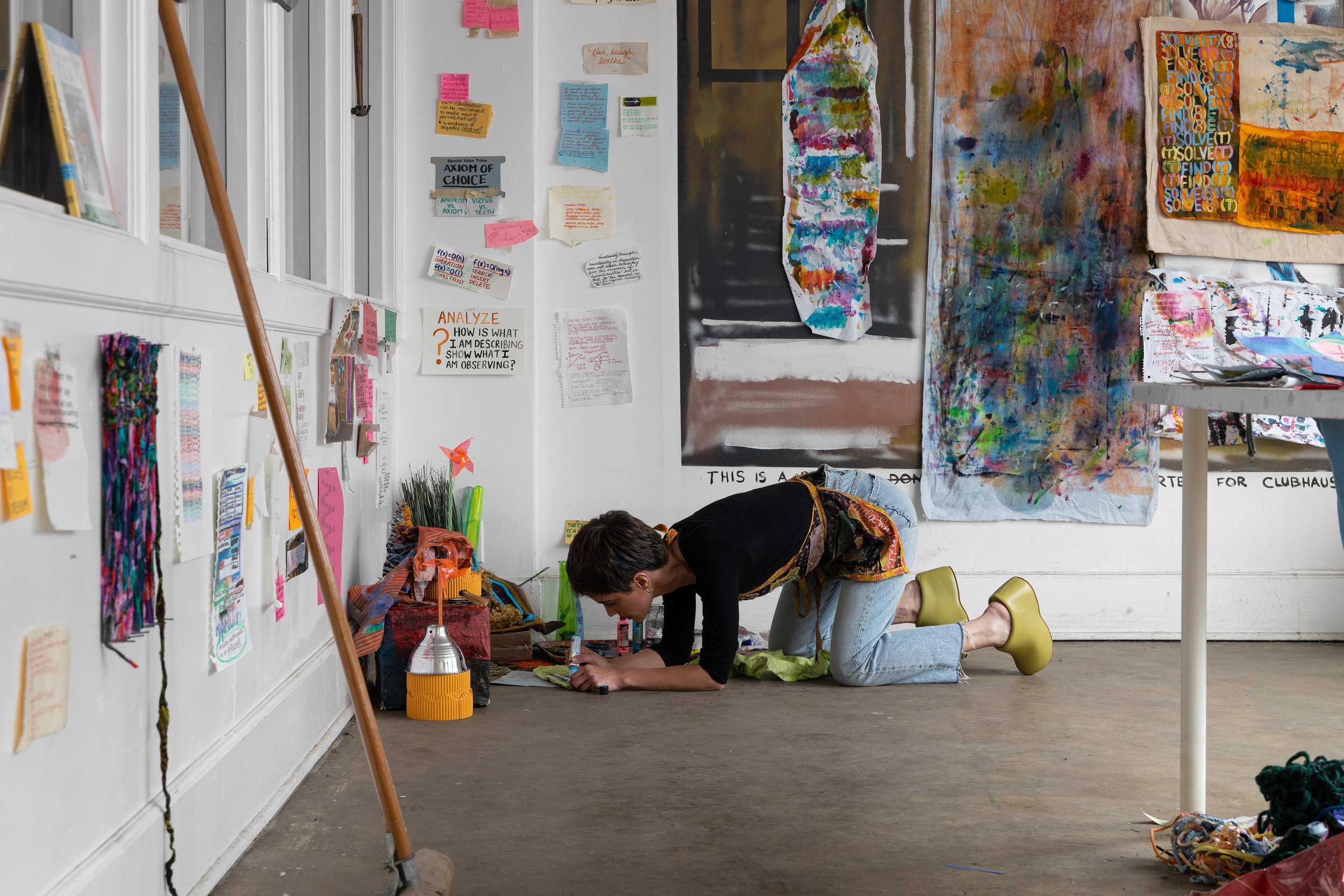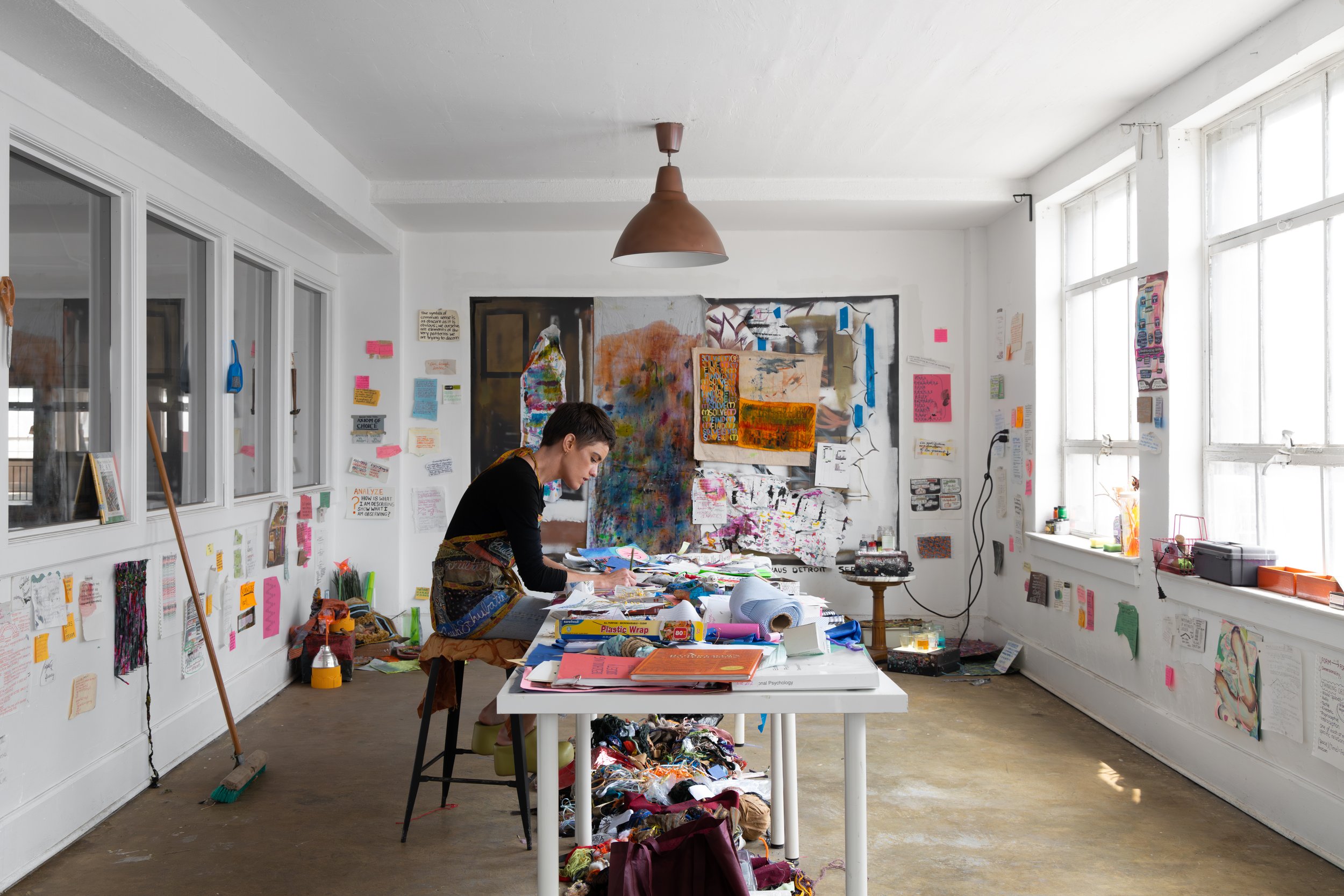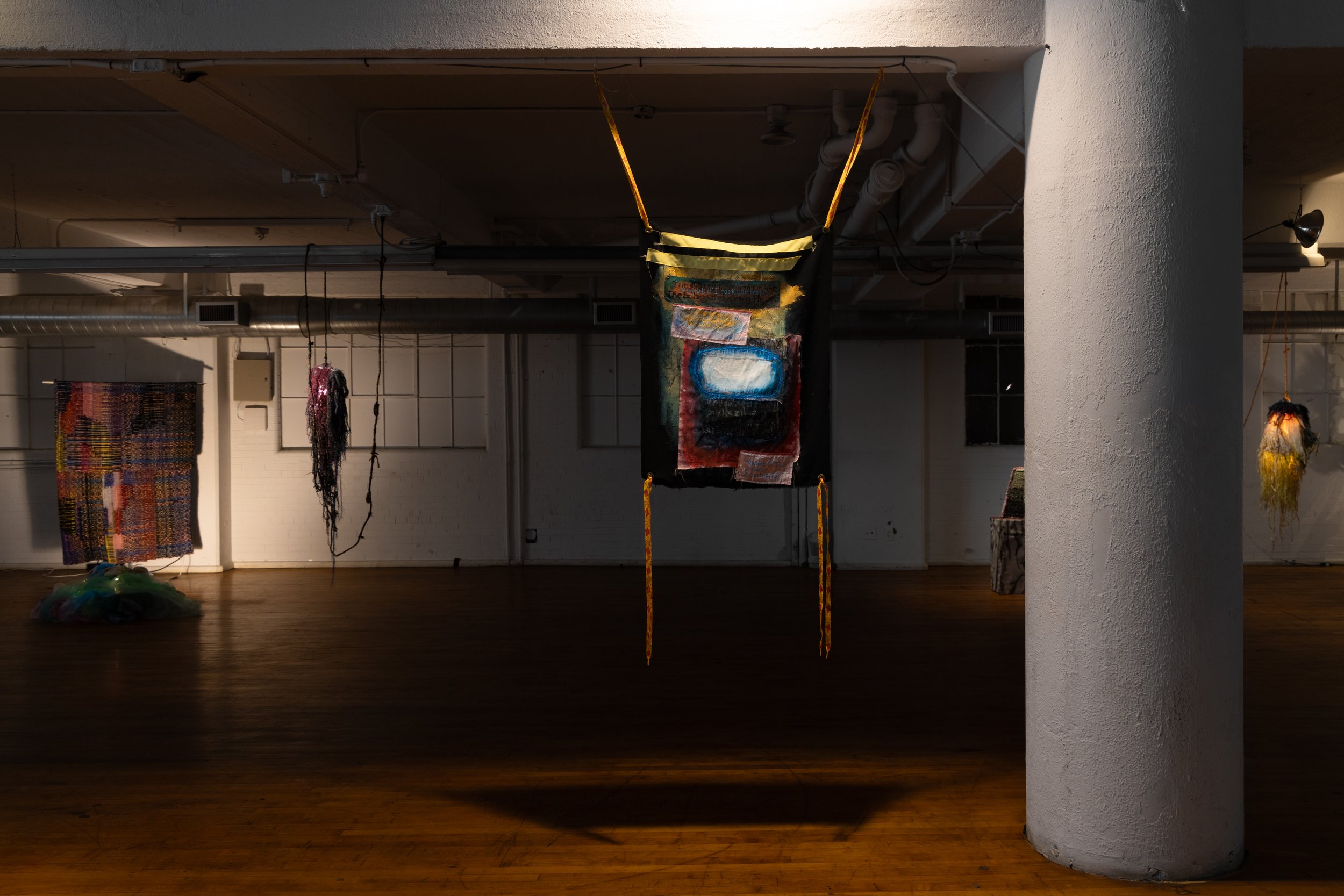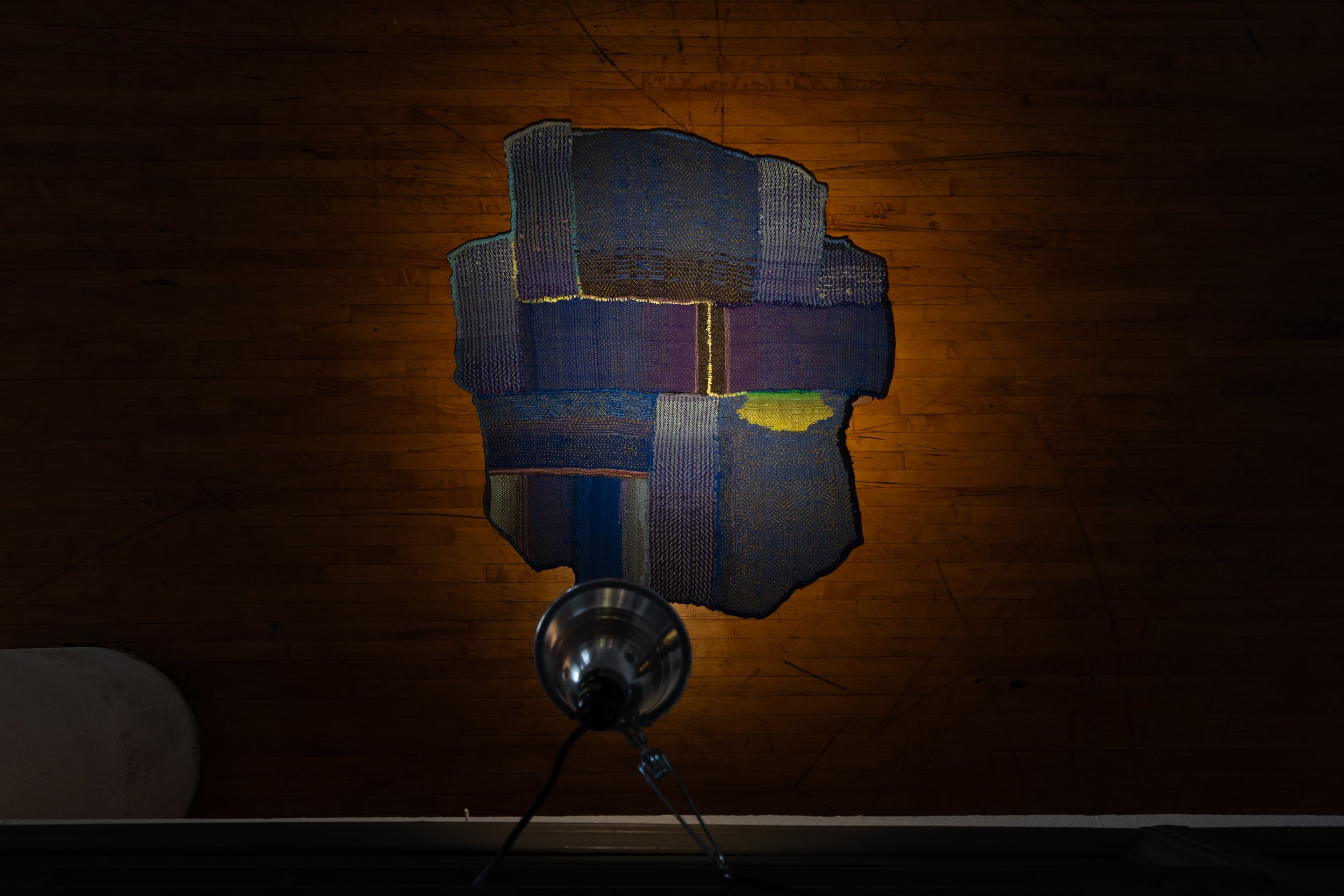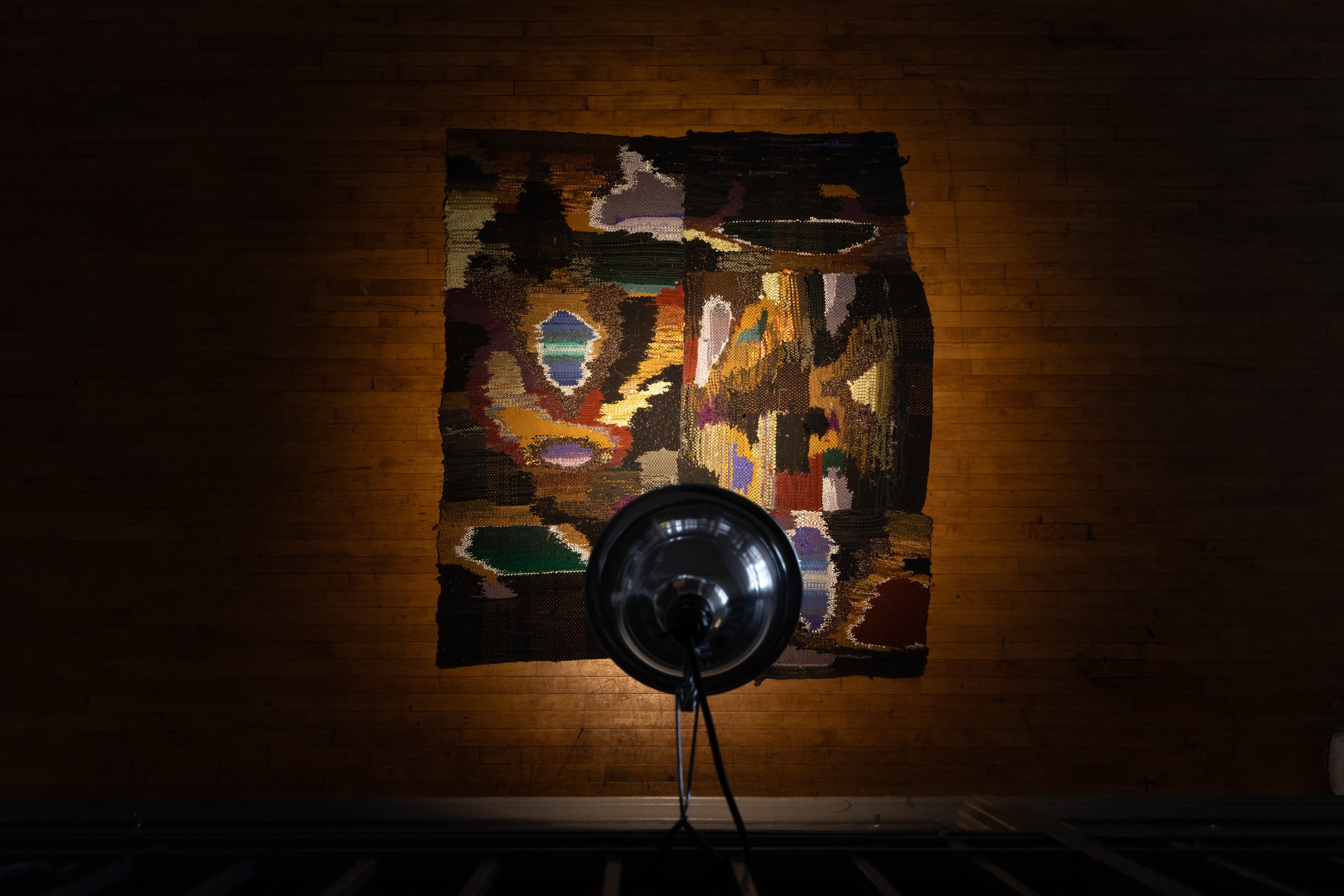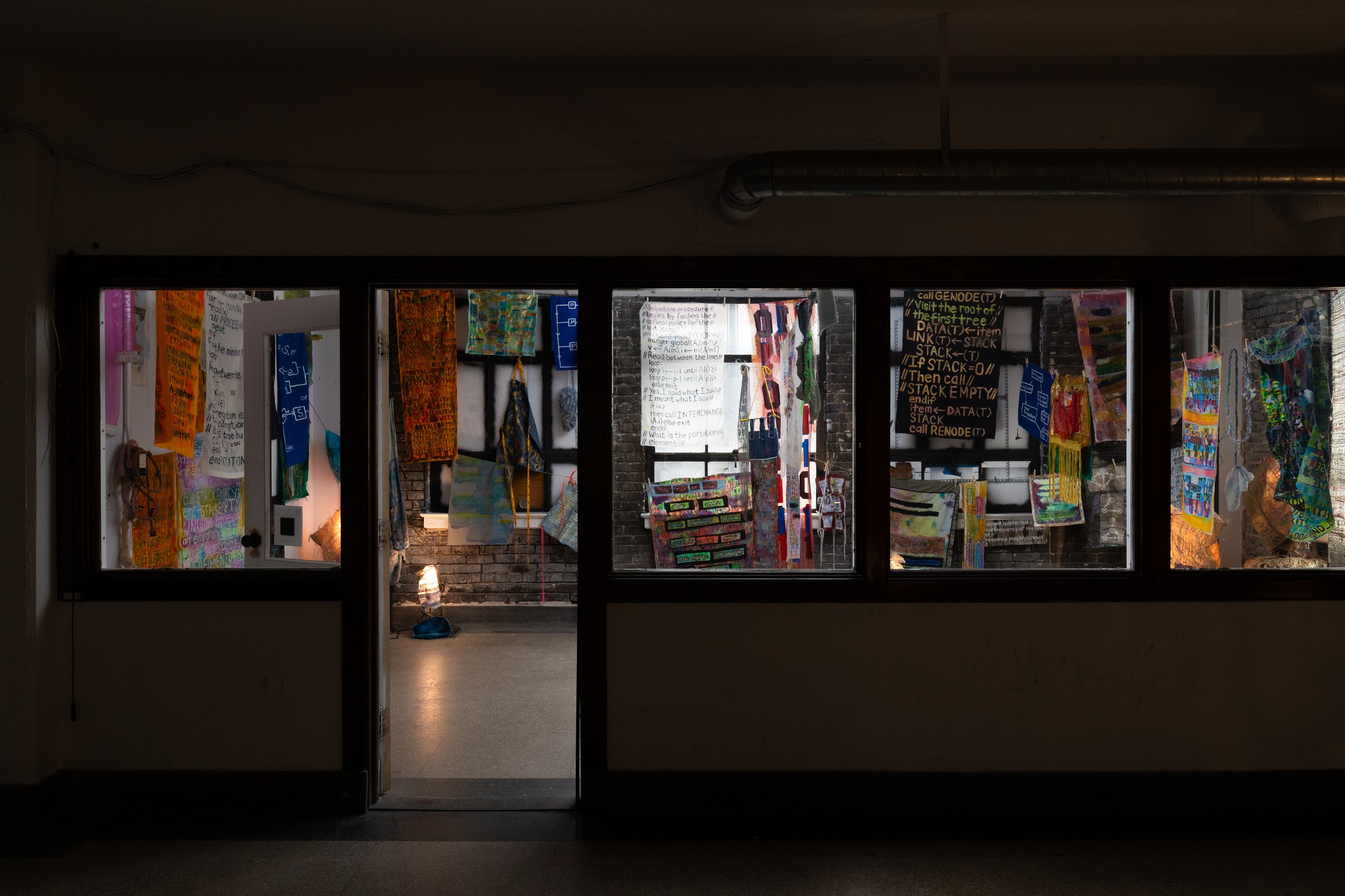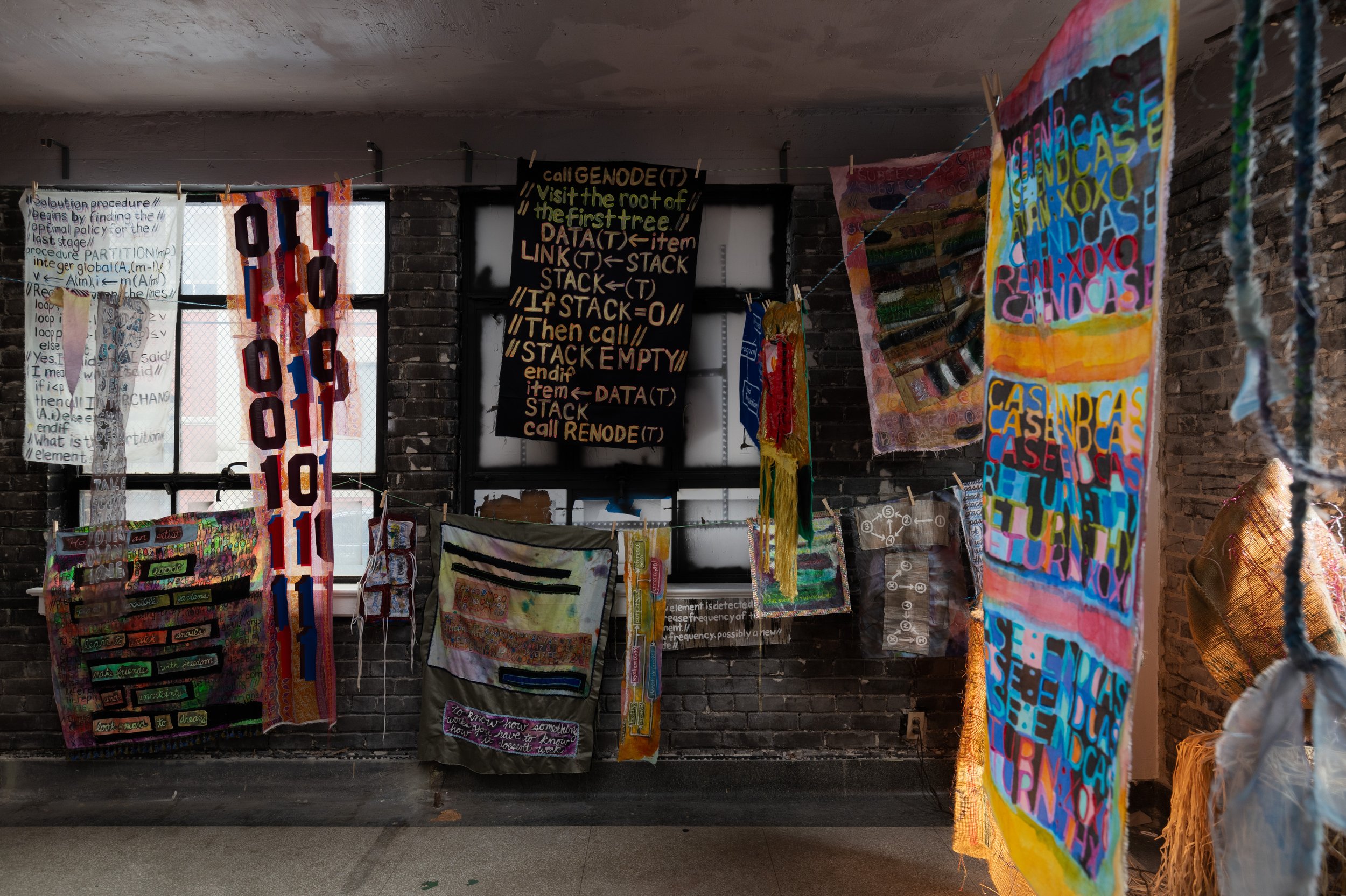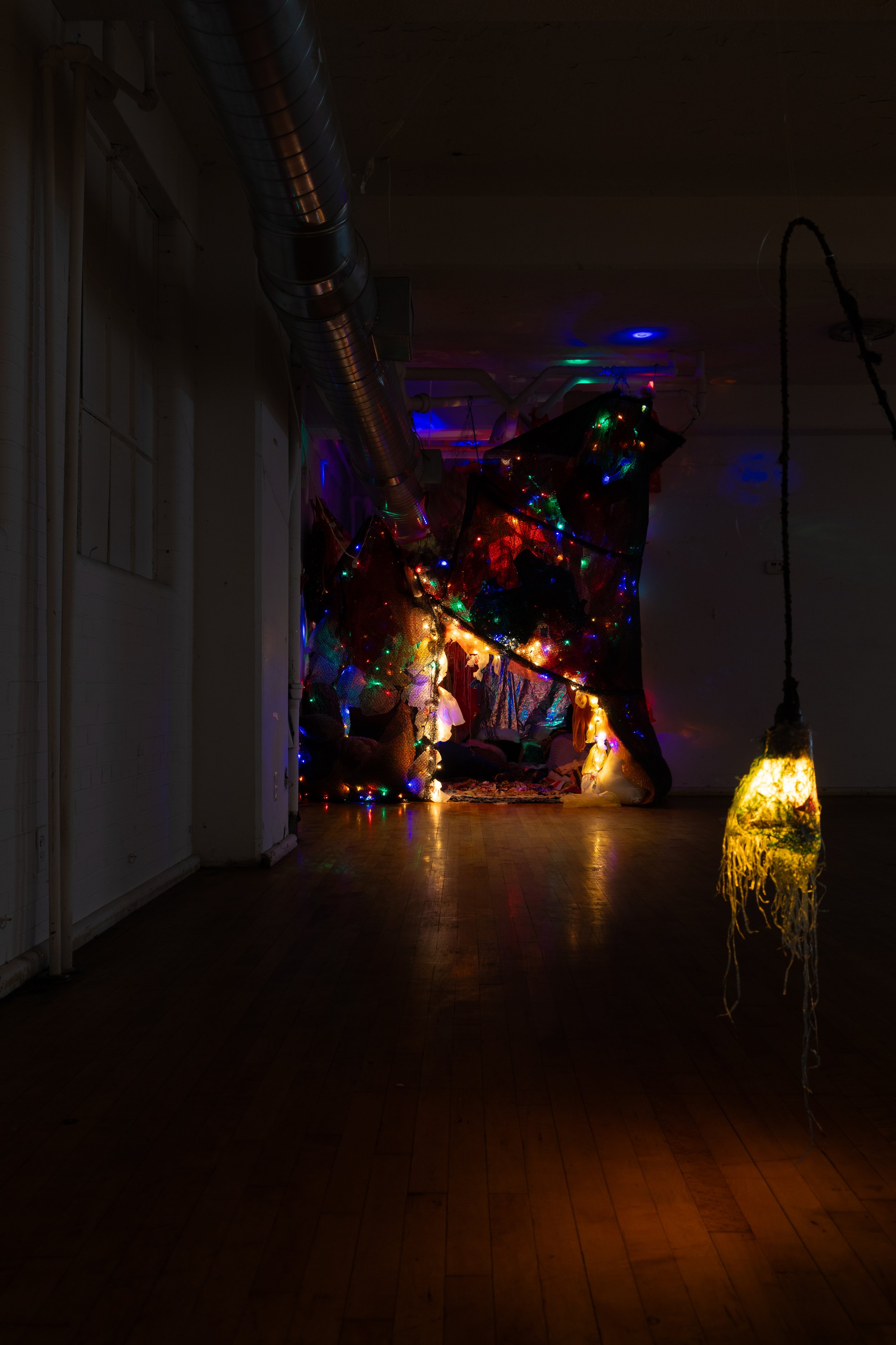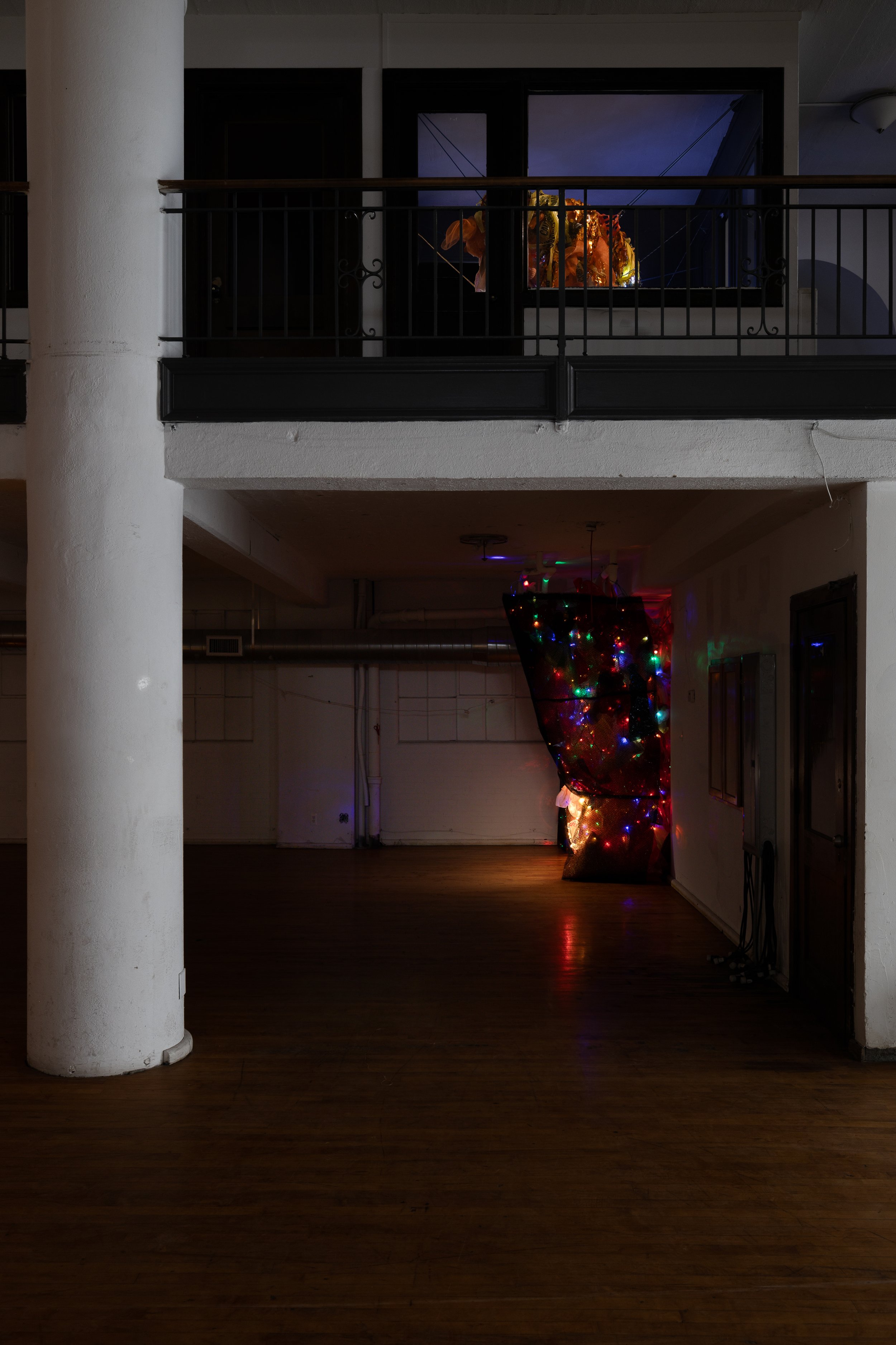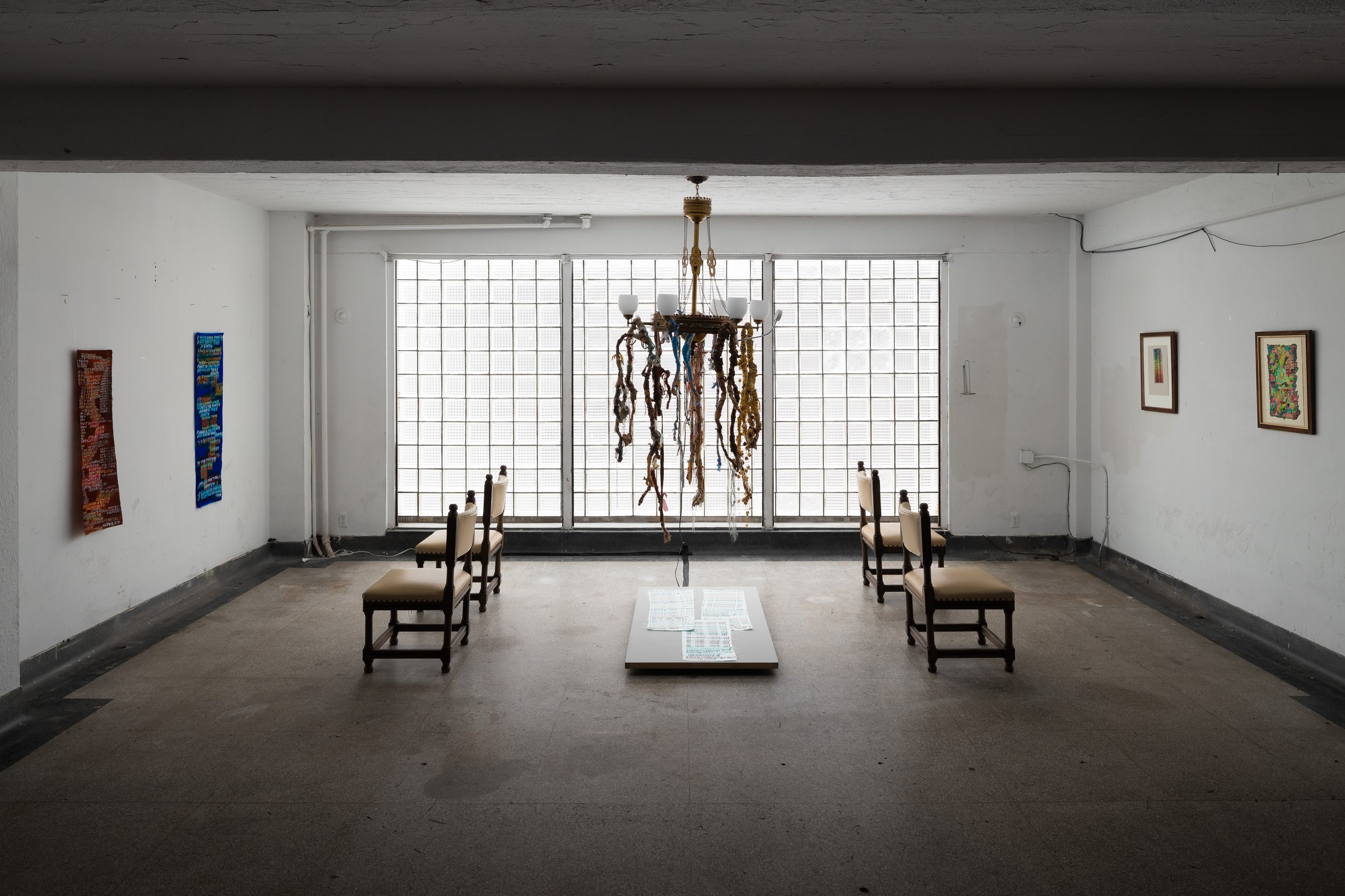Welcome to the world of Paula Schubatis
There is more than meets the eye with Paula Schubatis’ painterly, abstract textiles - the irregular forms and kaleidoscope of colors invite our observation and contemplation, and what a world we uncover.
Interestingly, the 2024 spring season brings a slew of fiber and textile-focused exhibitions, including “Weaving Abstraction in Ancient and Modern Art” at the Metropolitan Museum of Art, and “Woven Histories: Textiles and Modern Abstraction” at the National Gallery of Art, among others.
Each exhibition provides a different perspective on the salient themes of (abstraction + coded messaging) and (abstraction + exploration of construction), while underscoring the very new triumph of fibers and textiles entering the purview of fine art.
As institutions and art criticism look back to the thousands-year-old history of fiber art, shedding new light on previously overlooked artists and work, I thought now is the perfect time to delve deeper into our Fall 2023 retrospective, ERGO <Itself>, presenting work from 10 years of Paula Schubatis’ practice.
Paula Schubatis is best known for her abstract hand woven tapestries. At once impressionist and psychedelic, Schubatis’ woven works take upwards of 150 hours to create and, I have found, seemingly contain every shade and hue on the color wheel. Through working with Schubatis for over 8 years (let’s call it a decade!), I have learned that a handwoven textile is more than a ‘rug’ or ‘tapestry’, it is an archive of patterns that fluidly document process.
Elizabeth Fazzare wrote in her recent (March 27, 2024) article ‘Abstract Weaving is Having A Moment - Here’s Why’ for @artsy:
‘In weaving, abstraction is also an artistic exploration of the construction of the works themselves.’
And in the case of Paula Schubatis, this “exploration of construction” is a rhythm of creating structure and disruption.
STRUCTURE
Schubatis views the loom as an analog computer, generating output by executing functions from an organized set commands:
She sets up the loom in a certain way with certain materials
she presses down the treadles in a certain sequence…
Based on these functions a specific pattern is the expected outcome.
And these patterns can be hacked…
DISRUPTION
Working from predetermined pattern sets Schubatis graphs out on paper, she finds ways to disrupt the very structure she began to build.
She discovers a totally random threading, adding it to the graph to see what could happen.
Playing with the loom itself:
she changes the sequence of pressing down the treadles
Also, employing materials of certain color or texture to really enhance the disruption of the pattern.
From start to finish, the work fluidly takes its form based on how she engages with the process
… and how tuned in she is to subtleties of chance as the process unfolds, disruptions that may seem minute ultimately reshape the visual outcome of a work in a big way.
Encode. Decode. HACK.
Paula Schubatis’ practice is built on breaking cycles. With weaving she builds / disrupts structure, creating patterns that encode, decode and, in a sense, hack information. But these exercises go beyond her work at the loom. She especially has a penchant for hacking our conditioned perceptions/interpretations of language itself.
In our exhibition ERGO <Itself>, Schubatis created an entire room (we called it ‘the cave’) of word paintings. These panels of fabric have repeating phrases painted in Schubatis’ rounded script, in alternating colors, often overlapping, to create a visual pattern. The pattern often obscures the words, some barely legible.
But that is the intrigue.
You see colorful scribbles, you look closer, you suddenly read a phrase like “....” or my personal favorite “when I talk to myself, am I ever really listening”. Each phrase chosen is a very conscious tap into subconscious queries or fears of the human experience.
As each line of text is layered, so was our presentation of the work. Like a jungle with endless intersections of trees and vines. Or, a cave with overlapping stalactites. Suddenly, one had to physically navigate through thoughts and feelings we often disregard or actively bury as we go about our daily lives.
It is no coincidence that these word paintings are the inception point for Schubatis’ hand woven works.
Most obvious to the viewer is that the encoded text informs color and composition of the woven works. But also, the literal decoding we must do to understand Schubatis’ word paintings is like the warm up for the marathon of decoding our brains will do to understand the abstract language of her woven works.
As with the presentation of our ‘cave’ of word paintings and its connection to Schubatis’ tapestries, every element of ERGO <Itself> was very consciously placed to create an interaction with the vast space of the industrial building and between individual works. And, these interactions themselves were designed specifically to coax out each of our own inner dialogue as we navigated through the maze of tapestries, paintings and installations.
I would say I am very sorry to make this pun, but I am not. With ERGO <Itself> our goal was to make visually evident that viewing and understanding Schubatis’ work is akin to weaving a tapestry of one’s own perceptions and thought processes. Contemplating one format leads to a richer understanding of the next. Schubatis very consciously creates this way, one work informing another, but at the same time (and this should be very unsurprising at this point) she does not. Embarking on the creative process with a structure and plan, Schubatis ultimately leans into her subconscious instinct, just as she hopes we do in viewing and living with her work.
In living with Schubatis’ work myself (I have collected almost a dozen objects) I can say it injects a rare magnitude of energy and curiosity into your space and your collection. It is truly exhilarating to live with and impossible to imagine my home without.
Photos courtesy of Joe Tiano.
